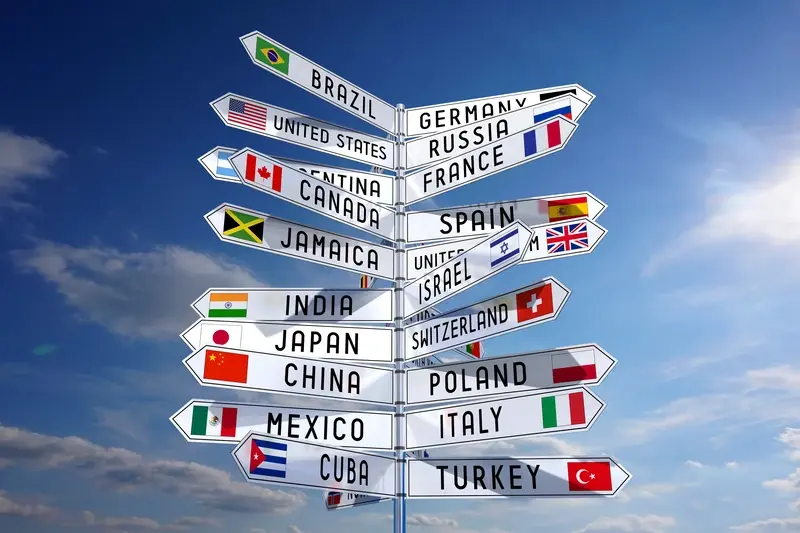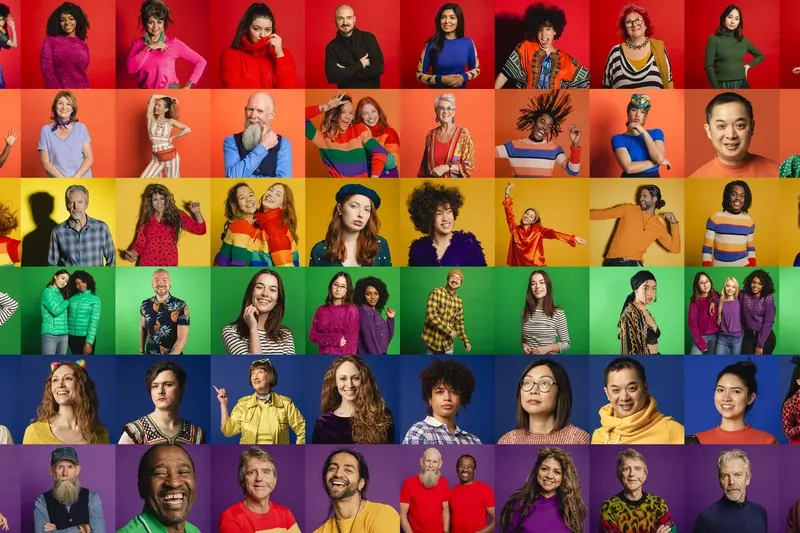Do I Need Different Privacy Policies For Different Countries?
Have you ever wondered if the privacy policy you created for your mobile app actually protects you legally in every country where it's downloaded? I've been working with mobile app developers for over eight years, and this question comes up more often than you'd think. The short answer is probably not—but don't panic just yet.
When you launch a mobile app, you're not just putting it on the app stores; you're potentially making it available to billions of people across different countries, each with their own data protection laws. What works perfectly fine in one country might leave you exposed to hefty fines in another. The rules around how you collect, store, and use people's personal data vary dramatically from place to place.
The challenge isn't just about following the law—it's about building trust with users who expect their personal information to be handled properly, regardless of where they live.
This guide will walk you through everything you need to know about international compliance for your mobile app. We'll explore which countries require special attention, how different data protection laws affect your privacy policies, and most importantly, practical ways to manage multiple policies without losing your mind. By the end, you'll have a clear understanding of whether your current privacy policy is putting your app—and your business—at risk in the global marketplace.
What Are Privacy Policies and Why They Matter for Mobile Apps
Right, let's start with the basics—what exactly is a privacy policy? Simply put, it's a document that explains what personal information your mobile app collects from users, how you use that information, and who you might share it with. Think of it as your promise to users about how you'll handle their data.
Now, you might be wondering why this matters so much for mobile apps. Well, mobile apps are data collection machines, whether we realise it or not. They collect everything from your name and email address to your location, device information, and usage patterns. Some apps even access your camera, microphone, or contacts. Users have every right to know what's happening with their information.
Legal Requirements Aren't Optional
Here's the thing—privacy policies aren't just good practice; they're legally required in most places around the world. Countries like the UK, members of the European Union, the United States, Canada, and Australia all have laws that mandate privacy policies for apps that collect personal data. Breaking these laws can result in hefty fines that could seriously damage your business.
Beyond the legal stuff, privacy policies help build trust with your users. When people download your app, they're essentially inviting you into their digital life. A clear, honest privacy policy shows that you respect their privacy and take data protection seriously. This transparency can be the difference between a user who sticks around and one who deletes your app after the first use.
The app stores—both Google Play and Apple's App Store—also require privacy policies for most apps. Without one, your app might not even make it to the store shelves, so to speak.
Understanding International Data Protection Laws
When you're building a mobile app that collects user data—and let's face it, most apps do these days—you need to know the rules. Different countries have their own laws about how companies can collect, store, and use people's personal information. It's like having different speed limits on different roads; what's perfectly legal in one place might get you into serious trouble somewhere else.
The big players in data protection are probably familiar to you already. GDPR covers the European Union and is known for being quite strict about user consent and data handling. California's CCPA gives residents the right to know what data companies collect about them. Brazil's LGPD follows similar principles to GDPR, whilst countries like Canada, Australia, and South Korea each have their own approaches to protecting user privacy.
What Makes These Laws Different
Each law has its own quirks and requirements. Some focus heavily on getting clear consent before collecting data. Others give users specific rights to delete their information or find out what you know about them. The penalties vary too—some countries might give you a warning first, whilst others can impose hefty fines straight away.
Start by identifying which countries your mobile app will be available in, then research the specific data protection requirements for each market. This saves you from scrambling to become compliant later.
The Basics Most Laws Share
Despite their differences, most international data protection laws share some common ground:
- Users should know what data you're collecting and why
- You need permission before collecting sensitive information
- People should be able to access or delete their data
- You must protect the data you collect from breaches
- Children's data needs extra protection
Understanding these laws isn't just about avoiding fines—it's about building trust with your users and creating a mobile app that respects their privacy rights.
The Problem with Using One Privacy Policy Everywhere
Here's the thing about privacy policies—most app developers write one and think they're sorted. I get it; writing legal documents isn't exactly fun, and having one policy for your entire global user base seems like the sensible approach. But this thinking can land you in serious trouble.
Different countries have completely different rules about how you handle user data. What's perfectly acceptable in one place might be illegal in another. Take the European Union's GDPR rules, for example—they require you to tell users exactly what data you're collecting and give them the right to delete it. Compare that to other regions where the requirements are much lighter, and you'll see the problem straight away.
When One Size Doesn't Fit All
Using a single privacy policy means you're either over-complicating things for users in countries with relaxed data laws, or you're not meeting the strict requirements of places like Europe or California. Neither situation is ideal—and the second one could result in hefty fines that would make your eyes water.
There's also the language barrier to consider. Your beautifully crafted English privacy policy won't help much if your users primarily speak French, German, or Spanish. Some countries actually require privacy policies to be available in the local language; it's not just good practice, it's the law.
The Real Cost of Getting It Wrong
Regulators don't mess about when it comes to privacy violations. They can block your app from app stores, fine you significant amounts, or both. The smart approach is to create targeted privacy policies that speak directly to users in each region whilst meeting their local legal requirements.
Which Countries Require Special Privacy Policies
Right, let's get straight to the point—some countries have stricter rules than others when it comes to data protection for mobile apps. The European Union leads the pack with GDPR, which affects any app that processes data from EU citizens; this means if someone in France downloads your app, you need to comply with GDPR regardless of where your company is based. It's pretty comprehensive stuff.
California has its own set of rules called CCPA (California Consumer Privacy Act) that applies to apps collecting personal information from California residents. Brazil's LGPD follows similar principles to GDPR, whilst Canada has PIPEDA—each requiring specific disclosures and user rights in your privacy policy.
The Heavyweight Champions
China presents unique challenges; apps operating there must comply with local data protection laws and often need to store data within Chinese borders. Australia's Privacy Act covers apps that handle personal information, and even seemingly relaxed countries like Singapore have their Personal Data Protection Act.
The reality is that most developed countries now have some form of data protection legislation that affects mobile app privacy policies
Don't Forget the Smaller Players
Countries like South Korea, Japan, and India have their own requirements too. The key thing to remember is that it's not just about where your company is located—it's about where your users are. If your mobile app is available globally, you're potentially dealing with dozens of different privacy requirements. Some are stricter about consent mechanisms, others focus on data retention periods, and many have specific rules about children's data. The smart approach is identifying your main user markets first, then tackling their specific international compliance requirements one by one rather than trying to handle everything at once.
Creating Country-Specific Privacy Policies for Your Mobile App
Right, so you've decided you need different privacy policies for different countries—now comes the fun part of actually creating them. I'll be honest with you, this isn't something you want to tackle on your own unless you've got a law degree tucked away somewhere.
The smart approach is to work with lawyers who specialise in data protection law for each region you're targeting. Yes, it costs money upfront, but it's far cheaper than dealing with regulatory fines later. These legal experts understand the nuances of local laws and can help you craft policies that actually protect your business.
What Makes Each Policy Different
Each country-specific policy needs to address local requirements whilst covering your app's actual data practices. For example, your GDPR policy for European users needs detailed consent mechanisms and withdrawal processes, whilst your CCPA policy for California focuses more on disclosure and opt-out rights.
The key differences you'll encounter include:
- Legal basis requirements for data collection
- User rights and how to exercise them
- Data retention periods and deletion processes
- Third-party sharing disclosures
- Contact information for data protection queries
Keep It Simple and Honest
Don't try to hide behind legal jargon—write policies that real people can understand. If your app collects location data to show nearby restaurants, say that. If you share analytics with third parties, explain why and with whom. Users appreciate transparency, and regulators definitely prefer clear, honest policies over confusing legal speak that seems designed to hide things.
Managing Multiple Privacy Policies Without Going Mad
Right, so you've accepted that your mobile app needs different privacy policies for different countries. Now comes the fun part—actually managing them all without losing your sanity. Trust me, this bit can get overwhelming quickly if you don't have a proper system in place.
The biggest mistake I see developers make is trying to manage everything manually. They create separate documents, store them in random folders, and then spend hours hunting for the right version when they need to make updates. There's got to be a better way, right?
Set Up a Proper System
Start by creating a central document that outlines what's different between each version. This becomes your master reference sheet. When you need to update something about data collection or third-party services, you can quickly see which policies need changing and what specific modifications each one requires.
Most companies use a version control system—the same type of thing developers use for code. This tracks every change you make and lets you roll back if something goes wrong. It might sound technical, but modern tools make this surprisingly straightforward.
Keep a simple spreadsheet listing each country's policy with its last update date, key differences, and renewal deadlines. This saves hours when you're trying to track what needs updating.
Consider Policy Management Tools
Several platforms now exist specifically for international compliance management. These tools help you maintain multiple versions, track changes, and even automatically update your app when policies change. They're not cheap, but the time savings can be substantial.
The key areas where these tools help include:
- Automatic updates across multiple app versions
- Change tracking and approval workflows
- Deadline reminders for policy reviews
- Templates for common international requirements
Remember, good organisation at the start saves you from headaches later. Set up your systems properly now, and managing multiple privacy policies becomes just another part of running an international mobile app.
Conclusion
Right, let's wrap this up. After working through all the different privacy policy requirements across various countries, I hope one thing is clear—you can't just copy and paste the same privacy policy everywhere and call it a day. The legal requirements are too different, and the penalties for getting it wrong are too severe.
The reality is that most mobile apps collecting user data will need different privacy policies for different regions. If you're targeting users in the EU, you need GDPR compliance; if you're going after the California market, CCPA requirements kick in; Australia has its Privacy Act—and the list goes on. Each has specific rules about what information you must include, how you present it, and what rights you need to explain to users.
But here's the good news: it's not as overwhelming as it first appears. Start with the countries where most of your users are located, then expand from there. Use privacy policy management tools to help you keep track of different versions, and don't be afraid to work with legal professionals who understand data protection law—it's often cheaper than dealing with regulatory fines later.
The key is being proactive rather than reactive. Build privacy policy management into your app development process from the start, not as an afterthought. Your users will appreciate the transparency, regulators will appreciate the compliance, and you'll sleep better knowing you've done things properly. That's what I call a win-win situation.
Share this
Subscribe To Our Learning Centre
You May Also Like
These Related Guides

How Do I Make My App Compliant With Different Countries' Data Laws?

Should I Offer Different Pricing For Different Countries?



